I was instructing a group of seven amateur photographers at the time this cover image was created. We were in hard bottom zodiac (16′ I believe), deep into the Khutzeymateen Inlet, and on day two of our three day epic adventure. When I talk about epic to describe this place and the experiences it holds I truly mean it. Everyone, including myself in the first year of my five visits becomes very emotional at one point or another on this life altering journey; usually it’s when they must leave, as it was with me. 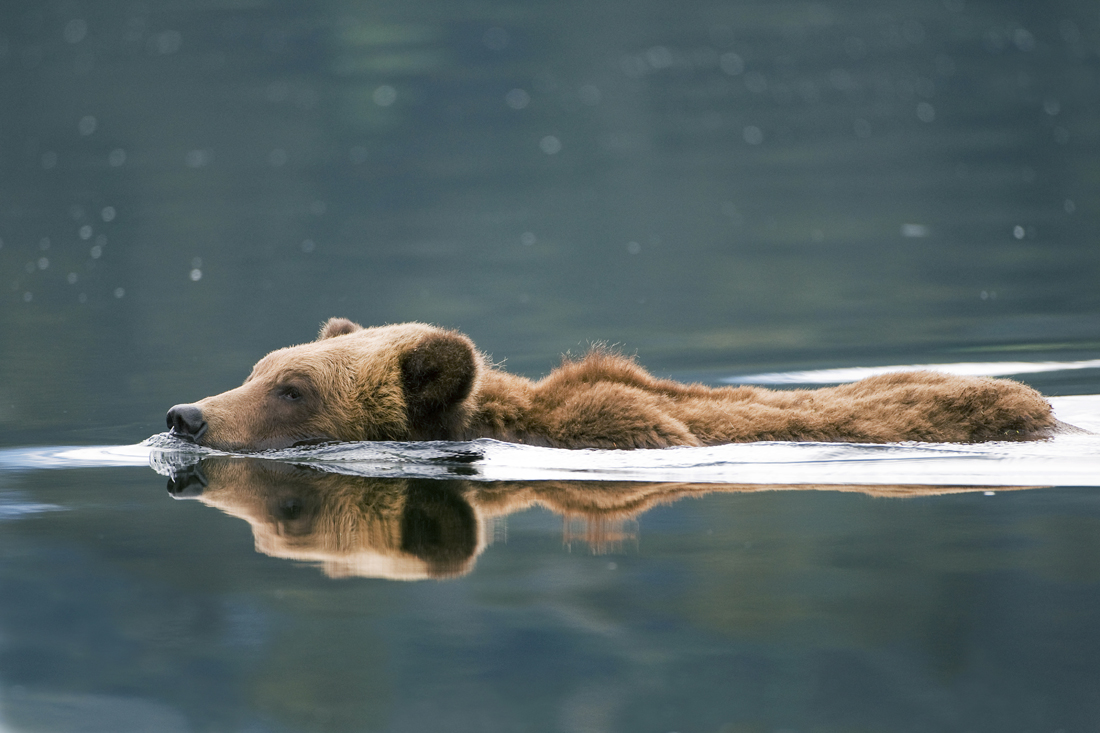
I can’t quite recall how the initial meet and greet came to be with the famous swimming bear (which many do in the Khutz), however I remember vividly how he was dunking his face near the shore, and surfacing with seaweed and algae all over it, it was quite the comical site. He swam and literally frolicked for quite a while before simply casting off from shore like a fishing boat and swimming calmly and directly to our zodiac. The tour operator was excellent during every visit I made in instructing you to remain ‘calm and gentle’, which was exactly what we did, and as he was literally right behind and the boat the only sounds you could hear were his breathing and gentle splashing. As I noted in the original article below, these bears are not aggressive, they are simply living in their environment, feeding on lush sedge grasses and concerned with their spring mating rituals. I know, food and sex! 🙂 That big bruin, with the grace of a large fish glided past us and swam probably a kilometer across the inlet, shook himself off, and spent the next hour exploring the other side. Sometimes the grass really is greener! All of us were simply gobsmacked that we experienced what we did, and it was the topic of our freshly caught crab dinner that night.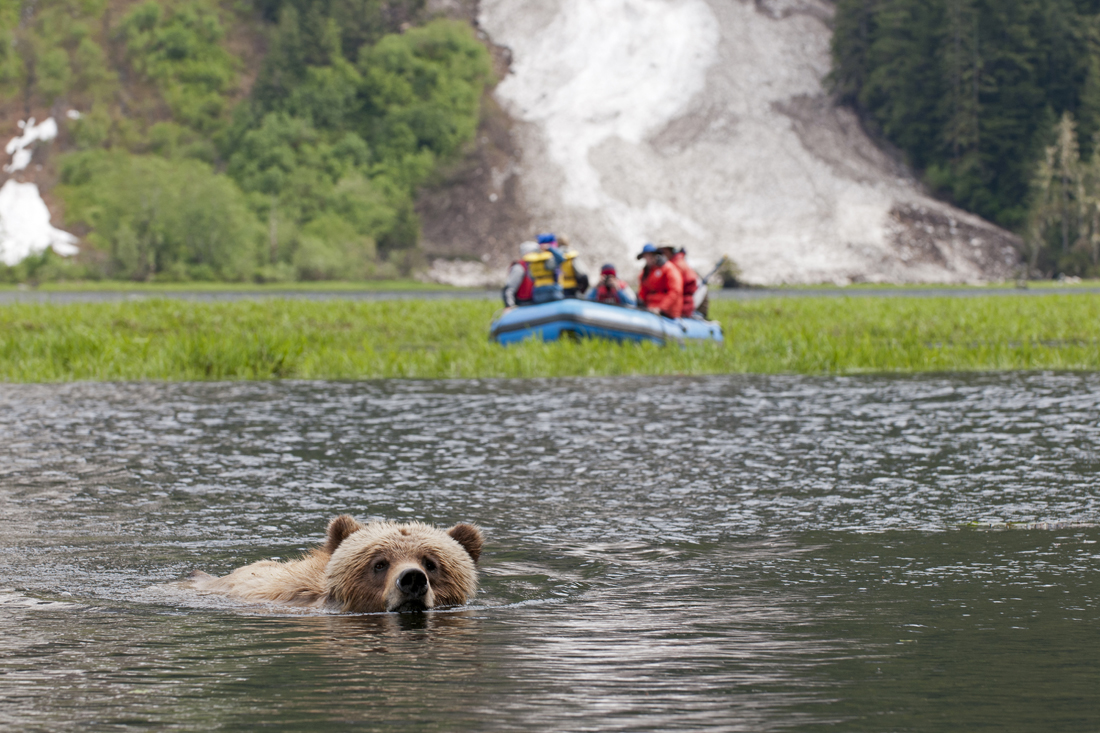
I thought it would be interesting to read and post my initial article from ‘Outdoor Photography Canada Magazine’, which was written almost as soon as I arrived home from that first trip, so the emotions and experiences were fresh. If you’re interested in this trip, all the information is in the article. I would highly recommend this to be put on your bucket list if you’re interested in seeing how nature truly exists. The cover image that was taken for Canadian Geo was not taken that first year, but this one was; here’s the story to accompany:
_______________________________________________________
BC’s Khutzeymateen Grizzlies: Ultimate Inspiration 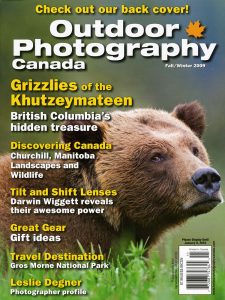
Only a handful of times in our lives are we lucky enough to experience something that has the power to evoke change; not just in ourselves but others who we come in contact with. My recent trip to the protected Khutzeymateen Grizzly preserve in Northwestern British Columbia is one of those times. Flying into the stunning 44,000 protected acres on a short floatplane ride from Prince Rupert, I marveled at the scenery. The coastline, with its numerous fjords, steel blue water and rugged snow capped mountains beckons to be explored and photographed. From research, I had a vague idea of what I was about to experience, but what I left with three days later had changed me both as a photographer and as a person. After not just seeing, but experiencing the land and the bears in such a visually compelling and harmonious state, the area dares a person to turn away and ignore what feels so right about this environment; unless you’re the Tin-man it’s simply impossible. Nowhere have I felt such a connection to a landscape, it was almost primal from the moment I stepped off the float of the plane onto the twenty-foot Zodiac that taxied us to our temporary home, a stunning seventy-one foot ketch rigged sailboat, the ‘Ocean Light ll’. I could feel the world as I knew it quickly being left behind, and my senses piqued at the raw adventure that I knew was lying before me. How was it that I was already so inspired and we hadn’t even seen our first bear yet? As I was to find out, such is the way of the Khutzeymateen.
After unloading our luggage onto the sailboat and with a brief orientation, we quickly made our way into the calm waters of the fjord in the Zodiac, making our destination the heart of the river valley and its estuary at high tide. I have probably seen six or seven Grizzlies in my life, they are not easy to find; it took all of about twenty minutes to see our first, and from there things only improved. You quickly learn however that this is a place where you must simultaneously experience the natural nuances and wonders while maintaining the strictest work ethic behind the camera. If you relax, opportunities will be missed, and in this place that can be heart breaking. Opportunities of this magnitude come but only a handful of times in a professional career. I found a two-camera system was the only way not to miss those magical moments. With a 200-400 f/4 mounted on a mono-pod and a handheld 70-200 f/2.8, I felt quite secure that I would be ready for anything. Technically, where as I am almost always on manual exposure, I chose to shoot in aperture priority, as the action is swift and the backgrounds are continually changing, with what is sometimes very challenging light conditions. After processing my images, I found I had made the right choice. Also noteworthy is that my shutter release was always set to ‘continuous high’ as fast action can break out in a heartbeat. Weather in the Khutzeymateen is hardly predictable, and sometimes you’ll need to push your ISO a bit during low light conditions. I usually shoot with a fairly wide-open aperture to isolate my wildlife subjects anyway, and in doing so was able to keep the shutter speeds high enough to freeze any action without pushing the ISO to extremes.
Our guide and charter owner does an utterly brilliant job in locating and approaching the bears within safe limits, thus allowing the photographer to view them in their undisturbed state. It’s important to note that Tom, along with bear biologist Wayne McCrory, bear naturalist Charlie Russell and Vicky Husband were all instrumental in the area gaining its protected status in 1992. With our skillful guides assistance, it was truly amazing to be able to watch and record an animal that is usually so hard to locate, never mind photograph, exhibiting behavior that begs your laughter, makes you gasp quietly or bite your tongue waiting in anticipation of what might come next; all the while trying to compose, focus on the subject’s eyes and maintain the highest level of concentration. A couple of things quickly become evident after working with the bears: They are very intelligent, and they definitely showcase behavior eerily similar to our own, making them even more interesting to watch and photograph. No aggression was ever showcased, and even though all bears need to be shown respect, these animals can definitely teach us that much of the information we come across is sensationalized to make them into something they are not. With all that, I don’t think I’ve ever pushed myself so hard mentally with a subject, and at the end of the day it was all I could do to enjoy a fantastic meal, recount the day’s events with new friends and pour myself into bed. But sleep didn’t come easy, for the experiences of the day continued to go through my head over and over, and before I knew it the dawn poured in from the skylight above, forcing me to wipe my mental slate clean and quickly prepare for another potentially momentous day.
The next two days proved to be as rewarding as the first, with opportunities coming as quickly as we could slip another memory card into our cameras (bring lots of storage, I shot over 30 gigs worth). My only ‘off’ moments during these days was realizing that the experience was quickly passing, but I used this as a motivating factor to try and saturate myself with as much of the environment and the bears as I could. Back on the sailboat, Jenn, the main cook, prepared excellent meals like: halibut, crab, and homemade soups and breads that far surpassed what I thought were possible aboard a sailboat. Also provided was ‘to go snacks’ to help get everyone through the day. The atmosphere on the boat was light and upbeat and if you liked, pitching in was encouraged, and from my perspective recommended. It helped round out the experience. I had never taken in crab traps before, and it made that night’s dinner taste even better knowing I had played a role. I felt so comfortable I took time to create new headshots for Tom and Jenn’s twelve-year-old daughter Sarah, who was a brilliant help to everyone on board.
When the last night was winding down, I was hit with a tremendous feeling of loss that I was to leave this magnificent place the next morning; it was just too soon. I have always held the environment and its wildlife in high regard, but this area and the Grizzlies in it had taken that respect to a whole new level. These incredibly powerful, majestic beasts that symbolize freedom in our Canadian landscape had left their mark with me. It is on that note that I feel compelled to bring to light a disconcerting fact that the hunting of Grizzlies in the Province of British Columbia, even in some protected areas, continues today. It is hard to imagine that the government still allows what can only be classified as ‘trophy hunting’ for the sole purpose of putting a rug on a wall, and disrespecting what is arguably our most noble animal. There is no accurate record of Grizzly populations, however there is definite evidence to show their range is far less extensive than it once was, in this province and in others like Alberta and Manitoba. Statistics show that 78% of British Columbians polled are against this ‘sport hunt’, and financially the hunt now holds no water. Where once the government argued that bear tags sold to foreign hunters brought in huge dollars, that case has now been made redundant by the incredible popularity and economic spin-off of eco-tours just like the one I was on. BC’s environmental reputation may in fact be ‘shooting itself in the foot’ with the continuation of the bear hunt. The future economy and sustainability of the second slowest reproducing land animal in North America is clearly tourism oriented, and so the only question remaining is why does the hunt continue? Simply put, it just doesn’t make sense. Thanks however has to be given to such people as the aforementioned and people like Ian McAllister, photographer and writer who have all helped bring this area and the Grizzly hunt in general to global awareness. Ian has also played a central role in the protection of many of the adjoining valleys that surround the park that have been added recently as conservancies as well as being made into an enlarged GBMA, (Grizzly Bear Management Area) where Grizzly hunting is banned for ten years. Finally Ian states, “Clearly, we need many more Khutzeymateen style protected areas up and down the coast but instead we have an arbitrarily chosen set of “conservancies” that for the most part allow for trophy hunting.”
As I said my goodbyes and reluctantly boarded the floatplane to make one last pass over this ‘pure wilderness’ I realized that I would not be able to stay away for long. From the incredible scenery, the total escape from city life, the new relationships gained and the photography and experiences of the incredible Grizzlies, it is a place that gets into your mind, body and soul. If you have even the slightest desire to see what the closest thing to true, unaltered nature is and what it should look like, the Khutzeymateen is a place that needs to be experienced. Finally, I have to give my deepest thanks to Tom, Jenn and their daughter Sarah of Ocean Light ll Adventures (adventure@oceanlight2.bc.ca). Their professionalism, kindness and deep respect for the Khutzeymateen and its bears made the trip not just possible, but highly memorable and ultimately inspirational.
To see more of my work go to my portfolio page here
Cheers!

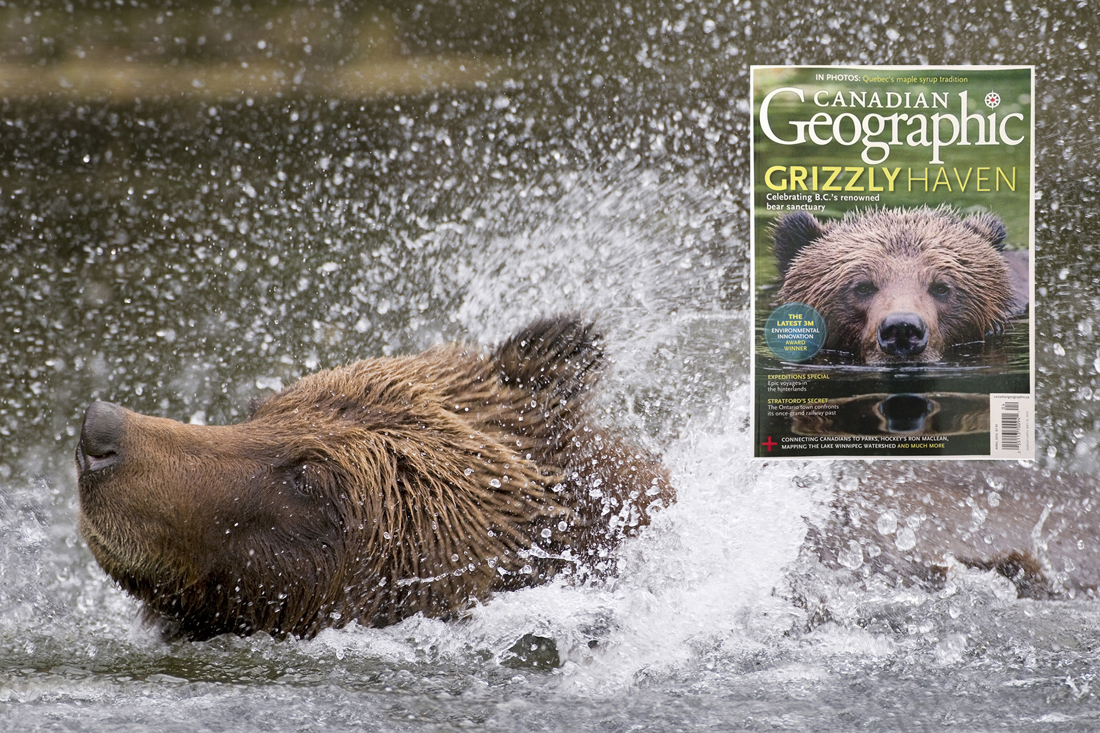
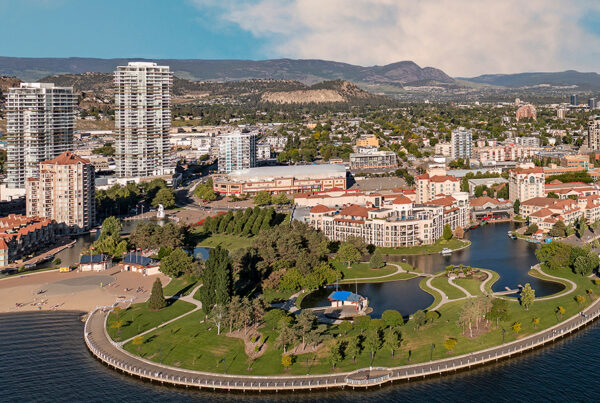

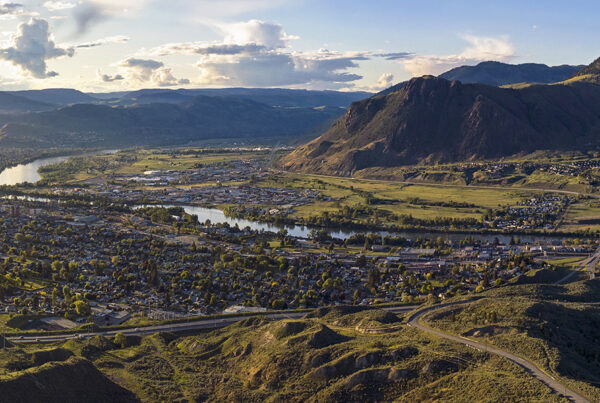
Recent Comments